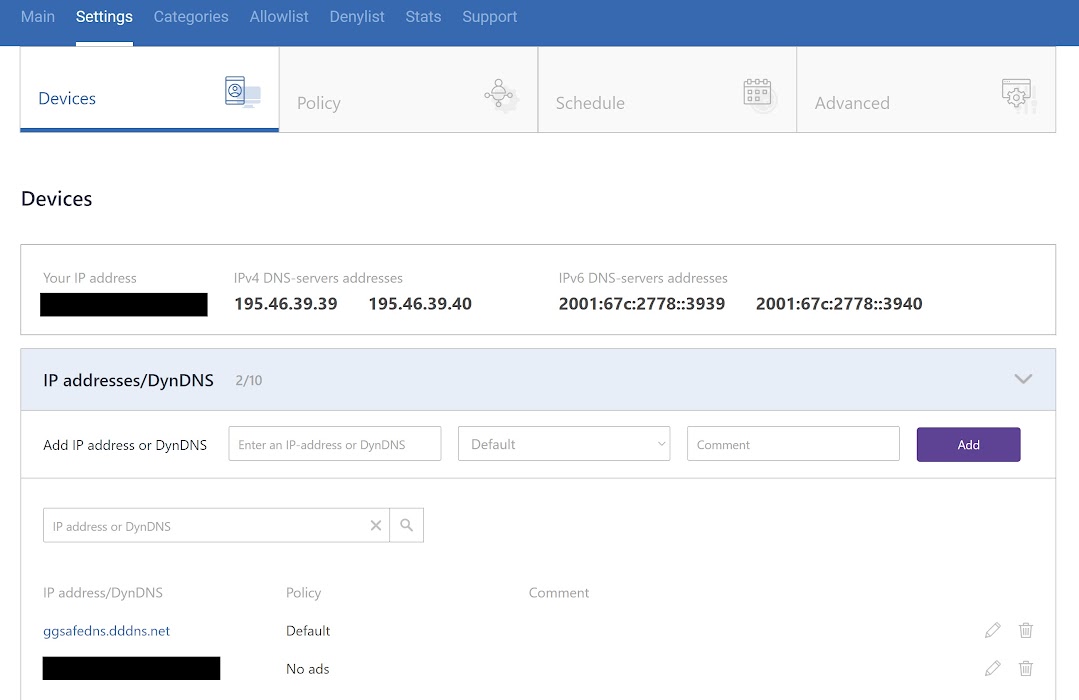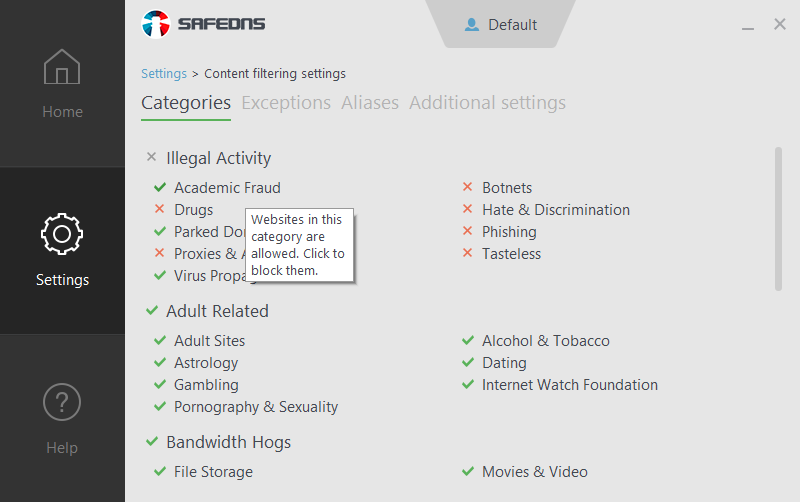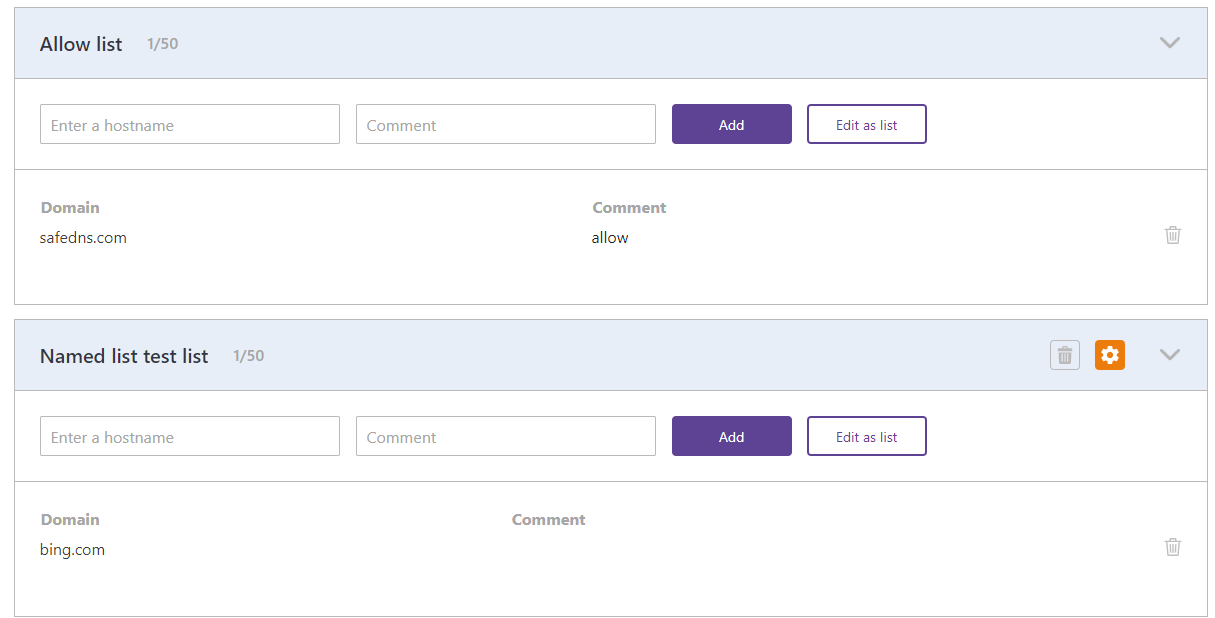TechRadar Verdict
This app goes a long way in helping users surf the net safely, and it’s best suited for use within an enterprise.
Pros
- +
Free trial available
- +
Custom content filters
- +
Remote management
- +
White labeling
Cons
- -
Difficult to setup
- -
Relatively expensive
Why you can trust TechRadar
SafeDNS was founded in 2010 by an entrepreneur named Alexander Biushkin to provide web filtering and DNS services for individuals. In 2013, it launched a commercial version of its product for enterprise users. Since then, the enterprise product has been the company’s driving force, currently with over 4,000 customers worldwide.
The company is based in Alexandria, Virginia, USA.

SafeDNS: Plans and pricing
SafeDNS is primarily a paid product targeted at enterprises, and it offers three main plans; Safe Office 10, Safe Office 25, and Safe Office 50, with the unique numbers corresponding to the number of permissible users for each plan.
For $150 per year, Safe Office 10 permits 10 users, 10 filtering profiles, 100 sites in an allow/deny list for each profile, and 10 personalized block pages. For $350 per year, Safe Office 25 offers similar features for 25 users, and for $600 per year, Safe Office 50 provides similar features to 50 users.
There’s a 15-day free trial period for each plan.

SafeDNS: Features
As the name suggests, SafeDNS is first and foremost a DNS resolution service. DNS refers to domain name system, the decentralized naming system governing the web. To illustrate, every property (website) on the internet is hosted on a specific IP address. But, it’ll be difficult to memorize the IP address of every website you want to visit, not to mention that the address isn’t always static.
Hence, DNS is the system that translates human-readable domain names (e.g., Google.com) into machine-readable IP addresses (e.g., 8.8.8.8). SafeDNS is one out of many dedicated DNS resolution providers available and an alternative to the default DNS service from your internet service provider (ISP). It offers many features, including;
Sign up to the TechRadar Pro newsletter to get all the top news, opinion, features and guidance your business needs to succeed!
The primary use case of SafeDNS is for filtering web browsing activities. Thus, it lets you create custom allow and deny lists to control browsing activities within a corporate network.
How does this feature work? In a simple way. If you place a specific web address on the deny list, any request to it that goes through SafeDNS will automatically not resolve. It’s very easy to implement once you set SafeDNS as the DNS resolution service on your network.
You can create multiple lists for convenience. You may use keyword-specific filters to restrict access to websites containing specific words.
Allow/deny lists aren’t the only way to filter content using SafeDNS. The app also lets you block entire categories of websites as determined by its database. For example, the platform maintains a database of websites associated with malware that gets updated frequently. If you enable the malware filter, it’ll automatically block any request to any web address contained in the database that you make intentionally or mistakenly. This way, you can be sure that your chances of falling victim to malware attacks are very low.
Likewise, SafeDNS also lets you get rid of advertisements from your browsing experience by automatically blocking domain names that are known to serve ads. The platform processes over 1 billion DNS requests each day, so it has much experience in categorizing web addresses for filtering purposes.
As an administrator, you can create different filtering rules for different user profiles and devices and manage these settings from a single, centralized dashboard. Hence, SafeDNS is one of the best DNS resolution tools to use within an enterprise.
SafeDNS isn’t only for blocking web addresses. You can block applications installed on a device from running, so far the device is connected to your network. A good use case of this feature is to ensure remote employees only transfer data between authorized apps.
The SafeDNS platform lets you block over 80 apps, arranged into 11 global groups such as cybersecurity-related and file sharing. You can block apps alongside any domain name associated with them.
SafeDNS doubles as a tool for monitoring the online habits of devices connected to your network (with permission). Given it's the DNS resolving all web requests, you can get comprehensive reports of the domain names visited by people connected to your network, e.g., staff, students, clients, or family. With this data, you can change filtering policies accordingly, making SafeDNS also a good parental control tool.
We found a unique feature in SafeDNS that you’ll rarely find in a DNS provider; white labeling. You can promote your own brand by imprinting your corporate logo and custom domain on the platform. It also supports reselling to other customers for which you can easily facilitate payments through the Subscription API.

SafeDNS: Interface and use
To work with this platform, you must first create an account through the official website. You must also install the SafeDNS app on any device you want to connect to your network, be it a smartphone (iOS and Android) or a desktop (Windows, macOS, and Linux). The initial setup can be complex, especially for non-technical users, so don’t hesitate to seek help from the official setup guides available on the SafeDNS website.
You can control filtering policies from anywhere by logging into your SafeDNS account. From the online dashboard, you can also monitor the browsing habits of connected users.
SafeDNS: Support
If you run into difficulties, you can contact SafeDNS’ support team through email or telephone. There are also dedicated email addresses for sales and payment inquiries. The setup guides and FAQ page are also valuable support resources for users.
SafeDNS: The competition
You can get similar features to SafeDNS on more affordable or even free alternatives, e.g., CleanBrowsing DNS or Google Public DNS. However, what gives SafeDNS a competitive edge is its support for different filtering rules for different user profiles and white labeling/reselling.
SafeDNS: Final Verdict
We consider SafeDNS one of the best DNS resolution services to use within corporate settings. It’s also applicable in educational settings and for parental control. We like that you can set custom filtering rules for different devices connected to your network and can monitor browsing habits to help you decide how to change filtering policies. However, we found the platform pretty complex to set up and much more expensive than suitable alternatives.
We've featured the best proxies.
Stefan has always been a lover of tech. He graduated with an MSc in geological engineering but soon discovered he had a knack for writing instead. So he decided to combine his newfound and life-long passions to become a technology writer. As a freelance content writer, Stefan can break down complex technological topics, making them easily digestible for the lay audience.

